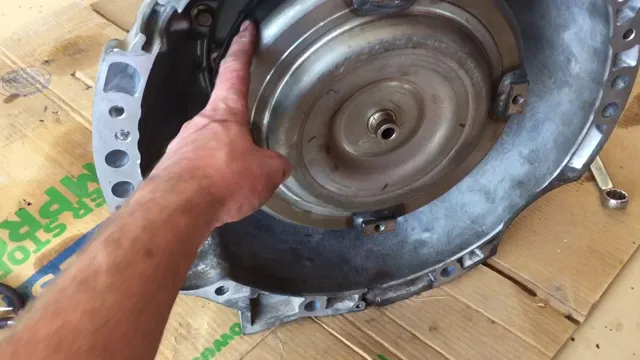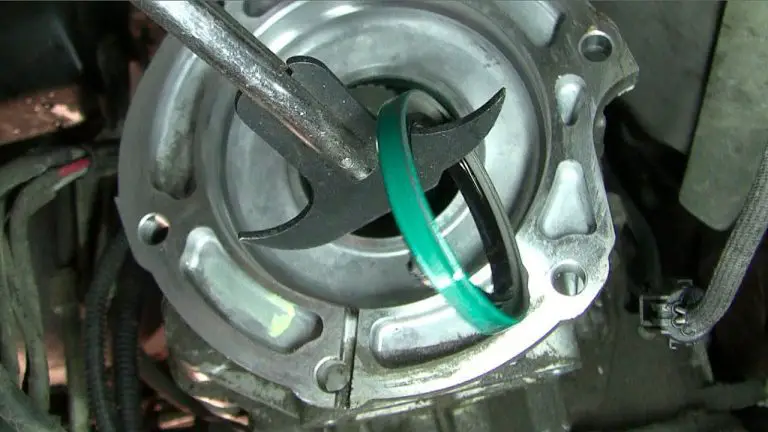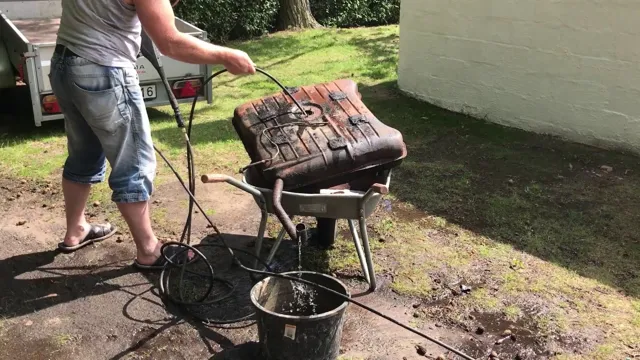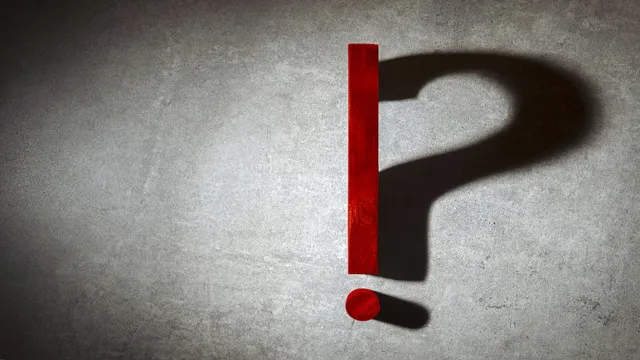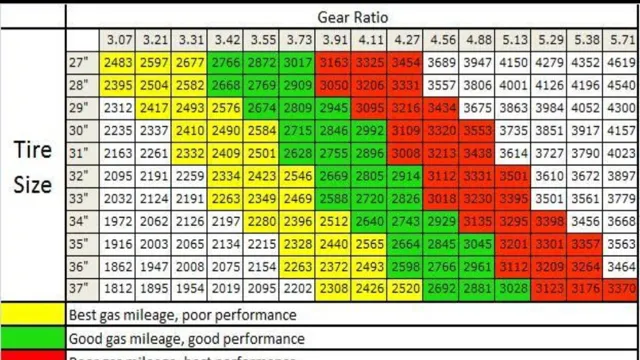Detecting Fuel Injector Leaks: A Step-by-Step Guide for Car Owners
Have you recently noticed a decrease in gas mileage or a strange smell coming from under the hood of your car? It could be a leaking fuel injector. Fuel injectors are responsible for delivering fuel to your engine’s combustion chamber, but over time they can become clogged or damaged, resulting in leaks. And a leaking fuel injector can cause serious damage to your engine if left unchecked.
So, how can you check for a problem with your fuel injectors? In this blog, we’ll cover some common signs and symptoms of a leaking fuel injector and give you some tips on how to diagnose and fix the problem. Whether you’re a seasoned mechanic or a DIY enthusiast, this guide will help you keep your car running smoothly and avoid expensive repair bills down the road. So, let’s get started and learn how to check for a leaking fuel injector!
Symptoms of a Leaking Fuel Injector
If you’re experiencing issues with your engine’s performance, a leaking fuel injector could be the culprit. There are a few key symptoms to watch out for to determine if this is the issue. Firstly, if you notice a strong gasoline smell coming from your car, it’s likely that one or more injectors are leaking.
Additionally, you may notice a decrease in fuel efficiency, or your vehicle may struggle to start. Another common symptom is a rough or shaky idle. If you suspect that you have a leaking injector, it’s important to have it addressed right away, as this can lead to engine damage or even fires.
It’s recommended to have your injectors checked and cleaned regularly to prevent any issues from occurring.
Decreased Fuel Efficiency
If you’ve noticed your car’s fuel efficiency has taken a hit lately, it could be due to a leaking fuel injector. Some symptoms to watch out for include a decrease in miles per gallon, a noticeable decrease in power, rough idling or stalling, and a strange odor coming from your car’s exhaust. If you’re experiencing any of these issues, it’s important to get your car checked out by a professional mechanic as soon as possible.
A leaking fuel injector can not only waste fuel and cost you money, but it can also potentially cause engine damage if left untreated. Think of it like a leaky faucet in your home – if you don’t fix it, you’ll end up wasting water and paying more on your utility bill. The same goes for your car’s fuel system.
Keep an eye out for these symptoms and address them promptly to keep your car running efficiently and smoothly.
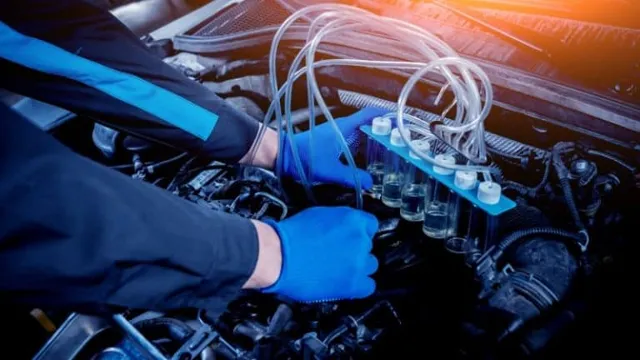
Engine Misfires or Hesitation
If you’ve been having trouble with engine misfires or hesitation, it could be due to a leaking fuel injector. This issue can cause your vehicle to experience a loss of power, slow acceleration, and a rough idle. Another symptom of a leaking fuel injector is a strong smell of gasoline coming from the engine compartment.
This can be dangerous, and you should address it immediately. A professional mechanic can diagnose which fuel injector is causing the issue and replace it. Ignoring a leaking fuel injector can cause serious damage to your engine and decrease your fuel efficiency, costing you more money in the long run.
Don’t let a small issue turn into a bigger, more expensive problem. Keep an eye out for these symptoms and take your vehicle in for repairs as soon as possible to ensure the safety and health of your vehicle.
Strong Smell of Gasoline
If you smell a strong gasoline odor in your car, it may be a sign of a leaking fuel injector. But what exactly is a fuel injector? It’s a small component that delivers fuel to the engine in a fine mist, allowing for efficient combustion. When it’s functioning correctly, you shouldn’t even notice it.
However, if it’s faulty or has a leak, it can cause a host of issues, including the strong fuel smell. Other symptoms of a leaking fuel injector include rough idling, poor acceleration, and increased emissions. It’s important to address these issues promptly to avoid further damage to your vehicle and potential safety hazards.
If you suspect a leaking fuel injector, take your car to a trusted mechanic for inspection and repair. Don’t wait until the problem gets worse – the longer you postpone it, the more expensive it may be to fix and the more damage it may cause.
Tools Needed to Check for Leaking Fuel Injector
If you suspect that your vehicle is experiencing issues with its fuel injector, it’s essential to check it as soon as possible. The first step is to gather the necessary tools to perform the inspection properly. You’ll need a fuel pressure gauge, which measures the fuel system’s pressure, and a noid light, which checks for the injector’s electrical pulse.
You may also require a multimeter to examine the injector’s resistance and a stethoscope or a mechanic’s stethoscope to hear the injector’s sound. These tools are essential in checking for a leaking fuel injector, and if you don’t have them, you may want to consider purchasing or renting them from an auto parts store. Remember, identifying and fixing a leaking fuel injector promptly can prevent further engine damage, improve fuel efficiency and save you from expensive repair bills.
Fuel Pressure Gauge
If you suspect that you have a leaking fuel injector, one of the essential tools you’ll need to check is a fuel pressure gauge. This tool measures the pressure in the fuel system and helps you determine whether the fuel injectors are leaking. When the fuel pressure is lower than normal, it may be an indication of a leaking fuel injector.
Conversely, when the fuel pressure is too high, it can indicate a blocked or clogged fuel injector. Using a fuel pressure gauge to monitor fuel pressure helps to determine whether the injectors are working correctly. Once you’ve connected the gauge to your fuel system, you’ll see a reading on the gauge that shows you the fuel pressure level.
Knowing the fuel pressure level helps ensure your vehicle’s engine is working correctly and prolongs the life of your car’s engine. Therefore, if you suspect you may have a leaking fuel injector, using a fuel pressure gauge is essential in helping you diagnose and fix the problem promptly.
Noid Light
If you suspect that your fuel injector is leaking, the first tool you’ll need is a noid light. This handy little gadget is designed to help you check the electrical signal between the fuel injector and the engine control module. Simply plug the noid light into the injector’s wiring harness and crank the engine.
If the light flashes, you know that the injector is receiving power and the problem is likely elsewhere in the system. If the light doesn’t flash, however, you may have a faulty injector or an issue with the wiring to the injector. Remember, it’s important to check for leaking fuel injectors as soon as you notice any signs of trouble, such as a rough idle or decreased fuel efficiency.
Catching and repairing the problem early can save you time, money, and frustration down the road. So, be sure to have a noid light on your tool list for automotive maintenance.
Wrenches and Socket Set
When it comes to checking for a leaking fuel injector, having the right tools is crucial. One essential tool is a set of wrenches and socket sets. These tools enable you to loosen and tighten bolts and nuts on the fuel injector, making it easier to access and examine.
Typically, you’ll need a socket wrench to remove the fuel rail and disconnect the fuel lines. The sockets come in different sizes, so it’s crucial to have a set that includes the exact size necessary for your particular fuel injector. A wrench set is also vital for removing and replacing different components of the injector system.
By using the right tools, you’ll be able to examine and repair fuel injector problems quickly and effectively. Remember, a small investment in quality tools can save you time and money in the long run.
Steps to Check for Leaking Fuel Injector
One common issue that vehicle owners may encounter is a leaking fuel injector. This can cause various problems such as decreased fuel efficiency, engine misfires, and a foul odor from gasoline. Fortunately, catching a leaking fuel injector early on can prevent more serious problems from occurring.
To check for leaking fuel injectors, start by inspecting the fuel pressure regulator for signs of gasoline leaking. Then, remove the fuel rail to examine the injectors closely. Look for any signs of fuel leakage, such as wetness or discoloration of the injector.
You may also conduct a fuel pressure test to detect any abnormalities in the fuel flow. If you suspect that one or more of your fuel injectors are leaking, it’s important to get it fixed as soon as possible by a professional mechanic. Not only does this prevent further damage, but it also ensures a safer driving experience.
Step 1: Attach Fuel Pressure Gauge
If you suspect that you have a leaking fuel injector, the first step is to attach a fuel pressure gauge to your engine’s fuel rail. This gauge will provide you with an accurate reading of your fuel system’s pressure, which is critical when checking for leaks. Make sure your engine is off before proceeding, and locate your fuel rail.
Once you find it, simply attach the pressure gauge to the valve on the rail and turn the key to the “on” position without starting the engine. Your pressure gauge should read between 30-50 psi. If it reads higher or lower than that range, your fuel system may have a problem, and you should investigate further.
If you notice that your fuel pressure continues to drop after turning the engine off, this could also be a sign of a leaking fuel injector. By taking this first step, you’ll be able to determine if your fuel system is experiencing pressure-related issues, allowing you to diagnose and fix the problem effectively.
Step 2: Check Fuel Pressure
Checking for a leaking fuel injector is crucial for maintaining your car’s performance. To do so, the second step is to check the fuel pressure. If the injector is leaking, you will notice a decrease in fuel pressure.
Start by attaching a fuel pressure gauge to the fuel rail and turn the key on without starting the engine. The gauge should read the manufacturer’s recommended pressure level. If it doesn’t, you may have a problem with the fuel pump or the fuel pressure regulator.
Next, turn the engine on and check the pressure again. If the pressure drops rapidly, it could be a sign of a leaking injector. However, if the pressure stays steady or drops slowly, the issue might be elsewhere.
Checking for leaks in the fuel system and the injectors themselves is the next step in pinpointing the problem. Remember, regular maintenance and checks can prevent costly repairs in the future.
Step 3: Use Noid Light to Check Injector Pulse
When it comes to checking for leaking fuel injectors, using a noid light is crucial to determine if there is an issue with the injector pulse. This simple tool is plugged into the injector harness and will provide a visual indication if the electrical signal is being sent from the computer to the injector. If the light flashes, the injector is receiving the proper electrical signal, indicating that it may not be the cause of the leak.
If the light remains off or doesn’t flash, it’s likely that there is a faulty connection or a problem with the injector. Remember to use caution when testing the system, know the specific specifications for your make and model, and always prioritize safety measures. By following these steps and utilizing a noid light, you can identify and fix leaking fuel injectors to ensure optimal vehicle performance.
Step 4: Check for Leaks and Damage
Checking for leaks and damages in fuel injectors is an essential step in maintaining a healthy engine. Leaks often occur due to cracks or breaks in the fuel injector, and detecting them is relatively easy. To check for leaks, all you need is to inspect the area surrounding the injectors and look for any signs of fuel stains.
Additionally, you could smell the fuel to check for any traces of gasoline. If the fuel injector is leaking, it should be replaced as soon as possible. Failing to do so could lead to a wide range of problems, including engine misfires and increased fuel consumption.
By taking the necessary steps to check for leaks and other damages in your fuel injector, you can avoid costly repairs and ensure optimal engine performance.
Conclusion and Final Thoughts
So there you have it, folks- the ultimate guide to checking for leaking fuel injectors. Remember, if you notice any strange smells, poor fuel economy or irregular engine performance, it’s time to give your injectors a little TLC. With a few simple steps and a keen eye, you can detect any leaks and nip them in the bud before they become a bigger problem.
Happy motoring!”
FAQs
What are the symptoms of a leaking fuel injector?
The symptoms of a leaking fuel injector can include poor fuel economy, rough idle, engine hesitation, and black smoke coming from the exhaust.
How can I check for a leaking fuel injector?
You can check for a leaking fuel injector by performing a fuel pressure test and visual inspection of the injectors. You can also use a stethoscope to listen for any clicking or ticking noises coming from the injectors.
Can a leaking fuel injector cause damage to my engine?
Yes, a leaking fuel injector can cause damage to your engine by allowing fuel to enter the combustion chamber without proper atomization, leading to incomplete combustion and damage to the piston rings and cylinder walls.
How do I fix a leaking fuel injector?
Fixing a leaking fuel injector will vary depending on the cause, but can include cleaning or replacing the injector, replacing the fuel filter or fuel pressure regulator, or repairing the fuel lines. It is best to take your vehicle to a certified mechanic for proper diagnosis and repair.

